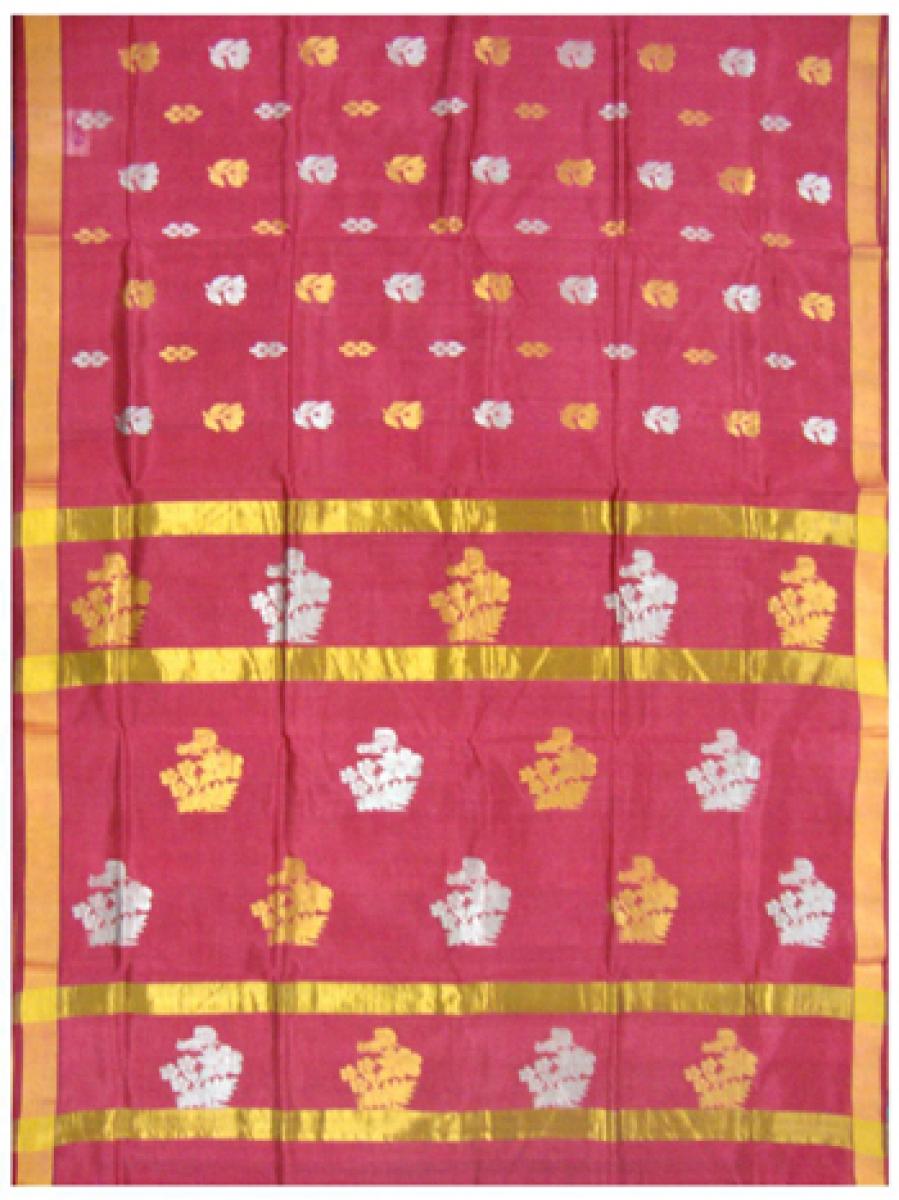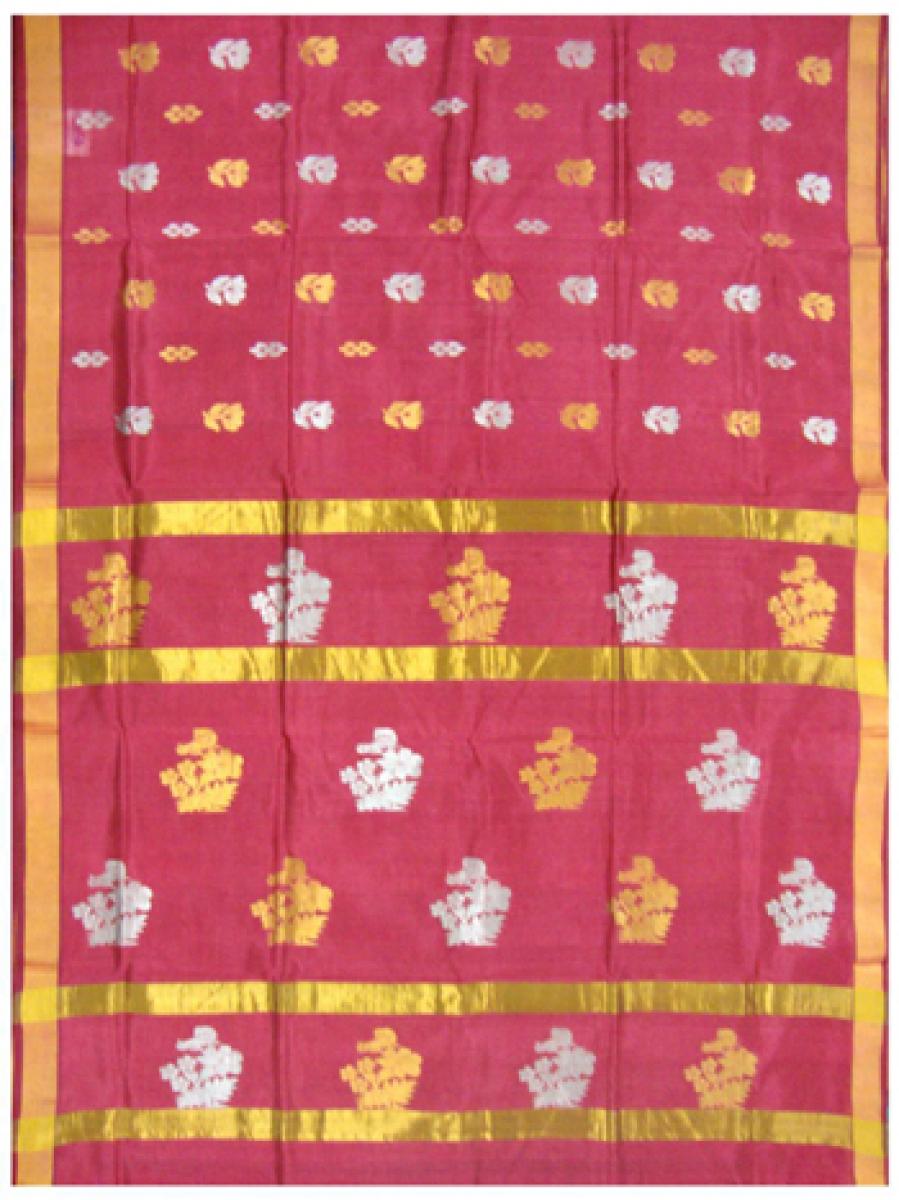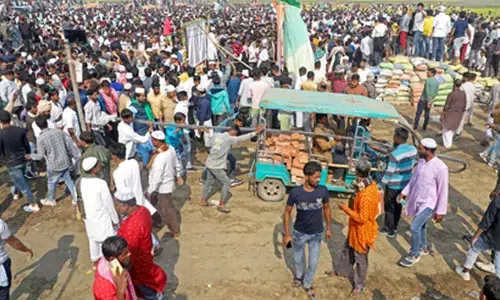GI tag fails to help Venkatagiri sari

GI tag fails to help Venkatagiri sari. Though famed Venkatagiri sari achieved Geographical Indication tag some six years ago, power looms in south India have been copying the design for making money and yet there has been no significant action from the authorities and weavers.
 Many power looms in south and north India have been replicating the design with slight changes but no action has been initiated by authorities or viewers, despite the unique saree attaining GI tag in 2009
Many power looms in south and north India have been replicating the design with slight changes but no action has been initiated by authorities or viewers, despite the unique saree attaining GI tag in 2009
Nellore: Though famed Venkatagiri sari achieved Geographical Indication tag some six years ago, power looms in south India have been copying the design for making money and yet there has been no significant action from the authorities and weavers.
The hand-woven sari has a 300-year-old history which is made by artisan cluster situated in Nellore district which earlier was under the dynasty of Venkatagiri. The sari is made of pure cotton with elaborate zari work and often with gold and silver on borders and is suitable for humid and hot weather conditions and even after being washed.
The excellent craftsmanship of the weavers has been recognised and the sari became the 18th Indian sari to get Geographical Indication (GI) tag from the registrar of Intellectual Property Rights (IPR).
Normally, a Geographical Indication is a sign used on goods for a specific geographical origin that indicates quality and craftsmanship attributed to that place of origin. It is used for agricultural, natural and manufactured goods. The tag enhances the reputation of the product across the world.
As per rule, the tag is advantageous since it confers legal protection in India which also prevents misuse and boosts exports to other countries. But, lack of awareness on the economic activity and support from the government wings, weavers of Venkatagiri sari failed to improve their sales and even failed to prevent replicating of the state-of-the-art design that represents antiquity.
Artisans were previously awarded with many national-level awards and participated in workshops and exhibitions organised by various organisations with the Jamdani, which is an age-old technique, of Bengali origin. Now, the same is popularised with the name ‘Neelambari’ in many parts of north and Uppada in East Godavari District.
“We have improved designs to suit needs of new generation but still there is no remarkable rise in sales, despite attaining GI tag. Now, we request the government to support hundreds of weavers and protect their livelihood,” said P Narasimha Rao, an artisan. He lamented that the weaving tradition has been followed by some other weavers of south Indian districts and were improving sales with excellent marketing skills.
“Department of Handicrafts under Ministry of Textiles, Government of India, provides support to these artisans and invites them to exhibitions and other commercial activities in the country. But, now, the department confined to issuing identity cards ignoring post production support,” said a superannuated senior official of the department.
By P V Prasad













